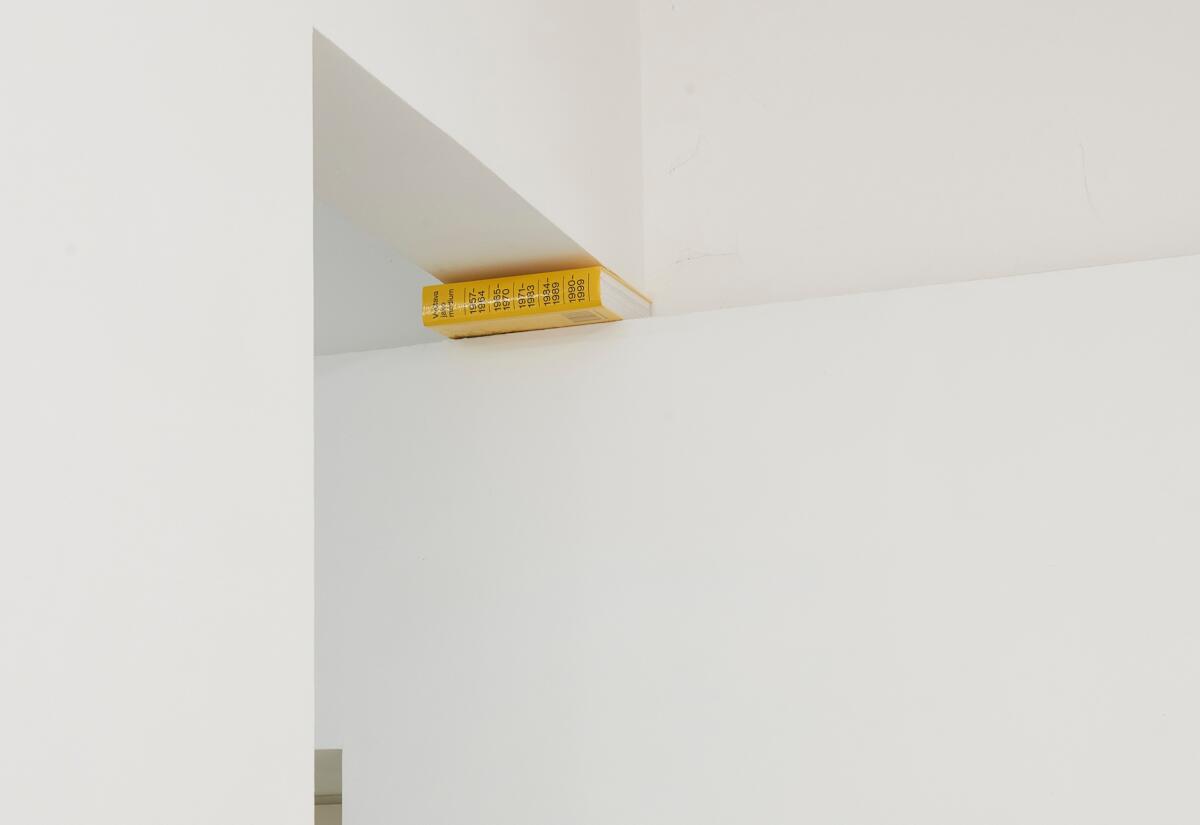
In 2021, the AVU Gallery opened the POP-UP AVU Gallery in Prague 3, Žižkov, with the aim of making the programme even more accessible to the public. During the academic year it is an experimental place where students gain experience in comprehensive preparation and organisation of exhibitions. The gallery’s programme is compiled by a curator selected for the year in question by an exhibition commission comprising members of faculty. The gallery regularly plays host to artists from outside the Academy of Fine Arts (Akademie výtvarných umění). The gallery is supported by grants from the City of Prague and the Ministry of Culture of the Czech Republic. Calls for proposals are usually announced twice a year: in November and May.
The exhibition was initially to be called “Beautiful Serge.” During the almost a year that has passed from its design to its realization, all the participants became mentally disconnected from the original name and thus, partly consciously and partly subject to the seductions of a dangerous chance event, chose a new title, “Pocket Variations.” It partially obliterates the reference to the beautiful and the quite interesting link to the French New Wave. At least for those who will not read this accompanying text and will be content with seeing the exhibition and its title. The following few paragraphs are an update of an essay that formed part of the exhibition proposal.
The inspiration for the exhibition title was one of the first French New Wave films, Beautiful Serge, directed by Claude Chabrol in 1958. The hero returns to his native village and tries to see it as in his memories. This effort encounters a double transformation ‒ of the protagonist and the village environment. The object of recollection is thus denied to the protagonist; it is unattainable and becomes an object of nostalgia.
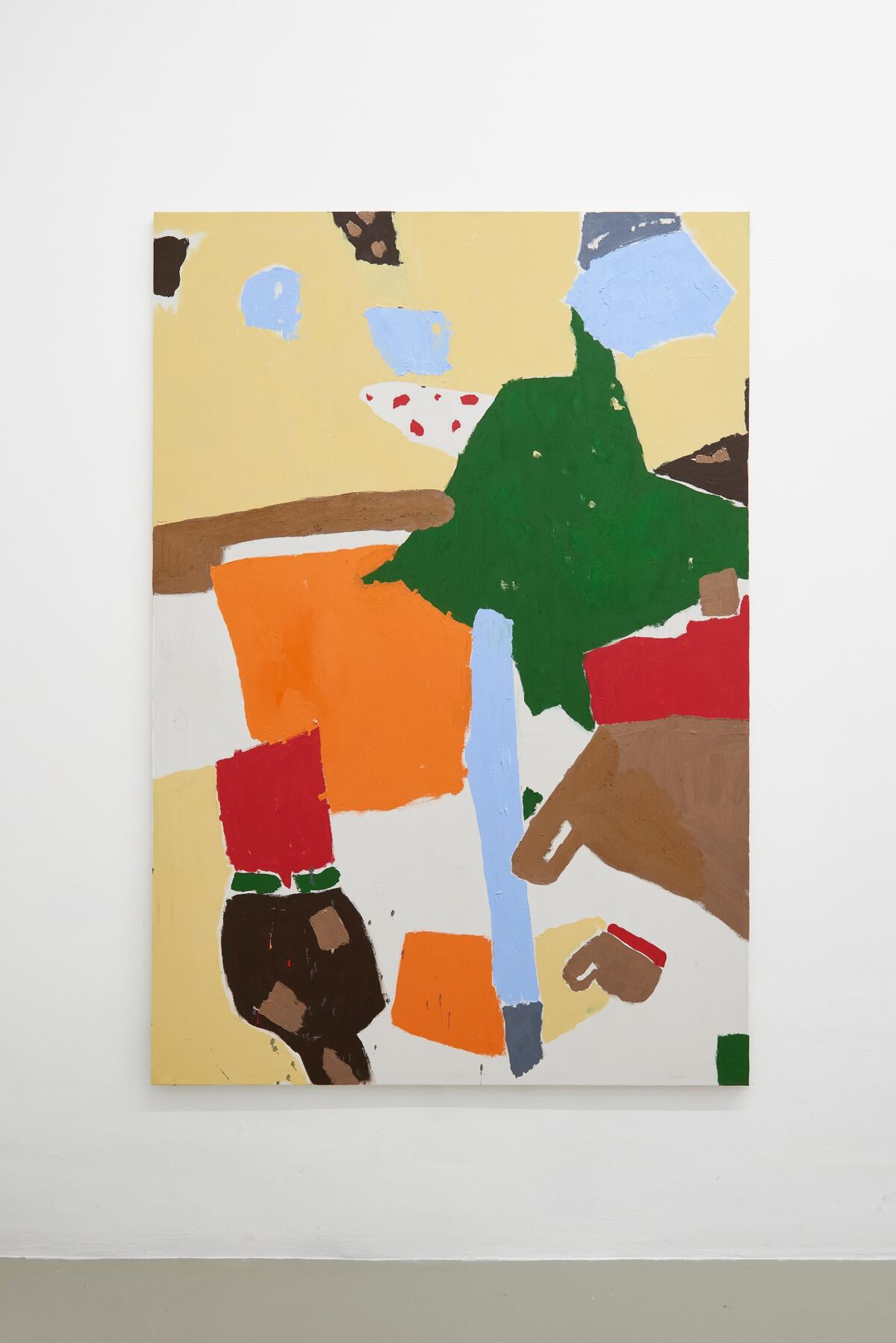
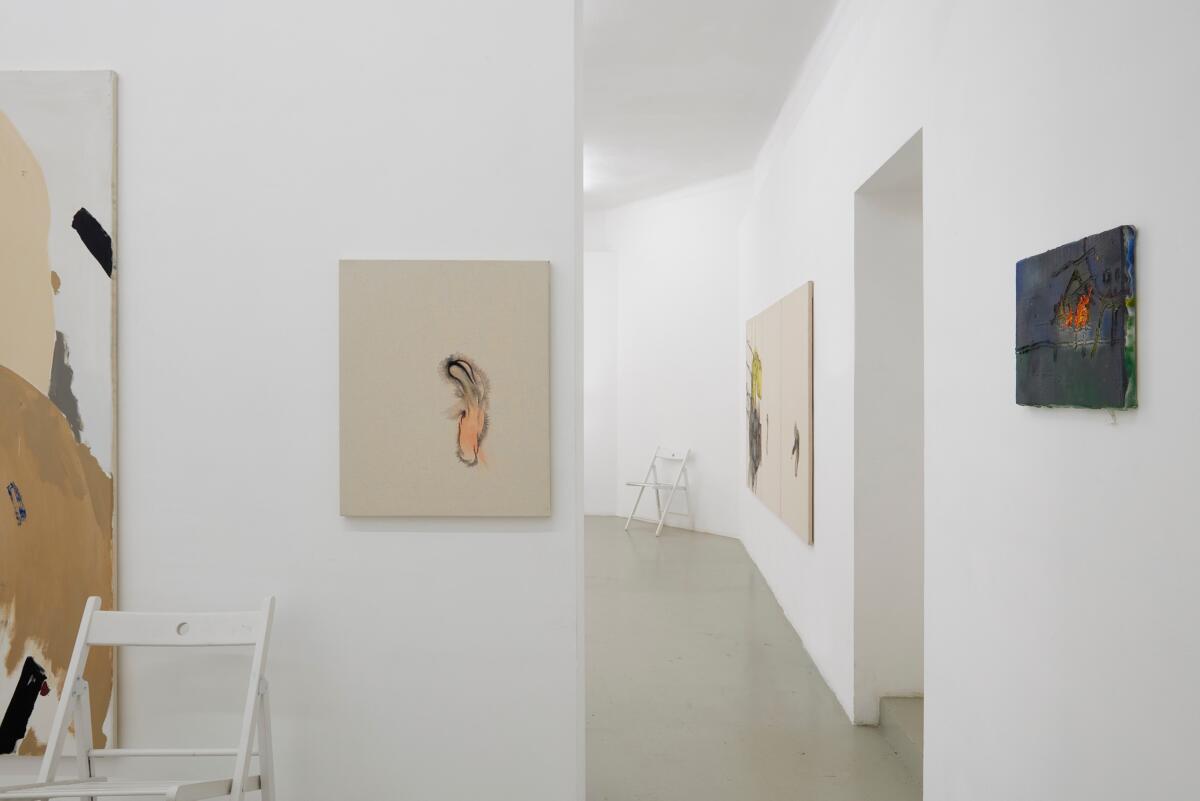
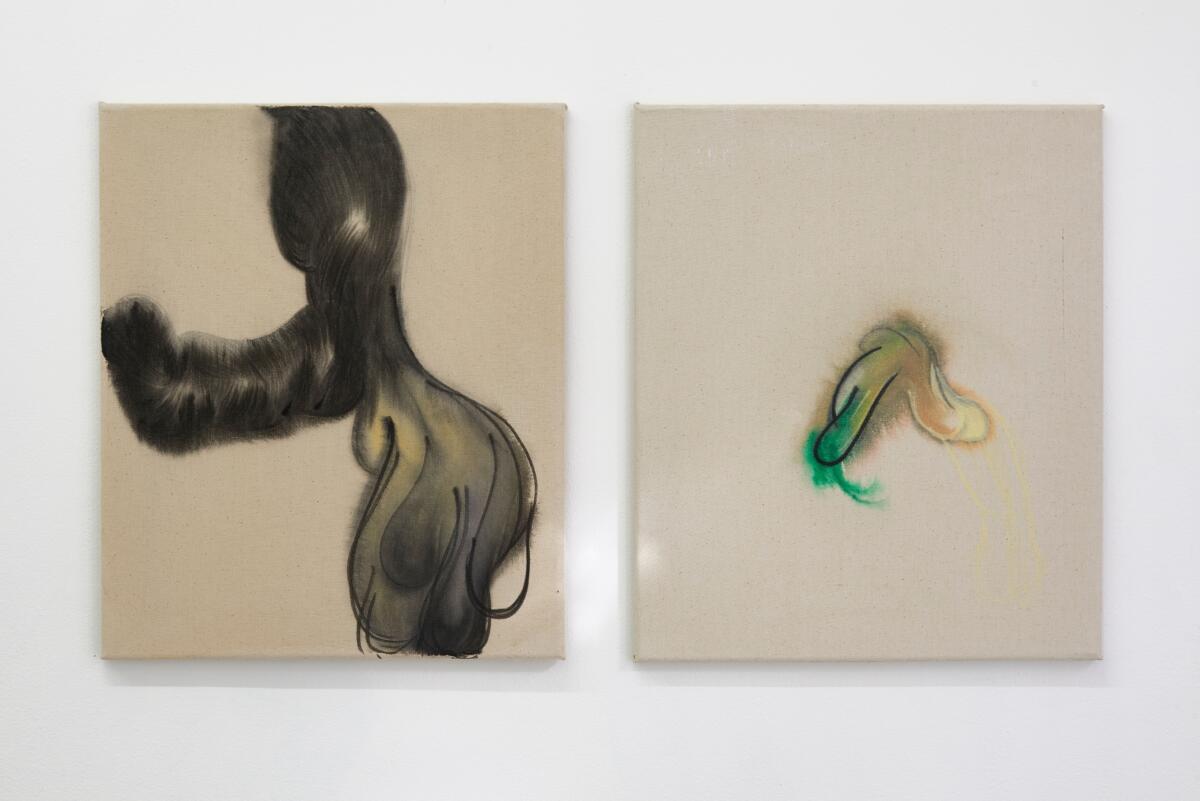
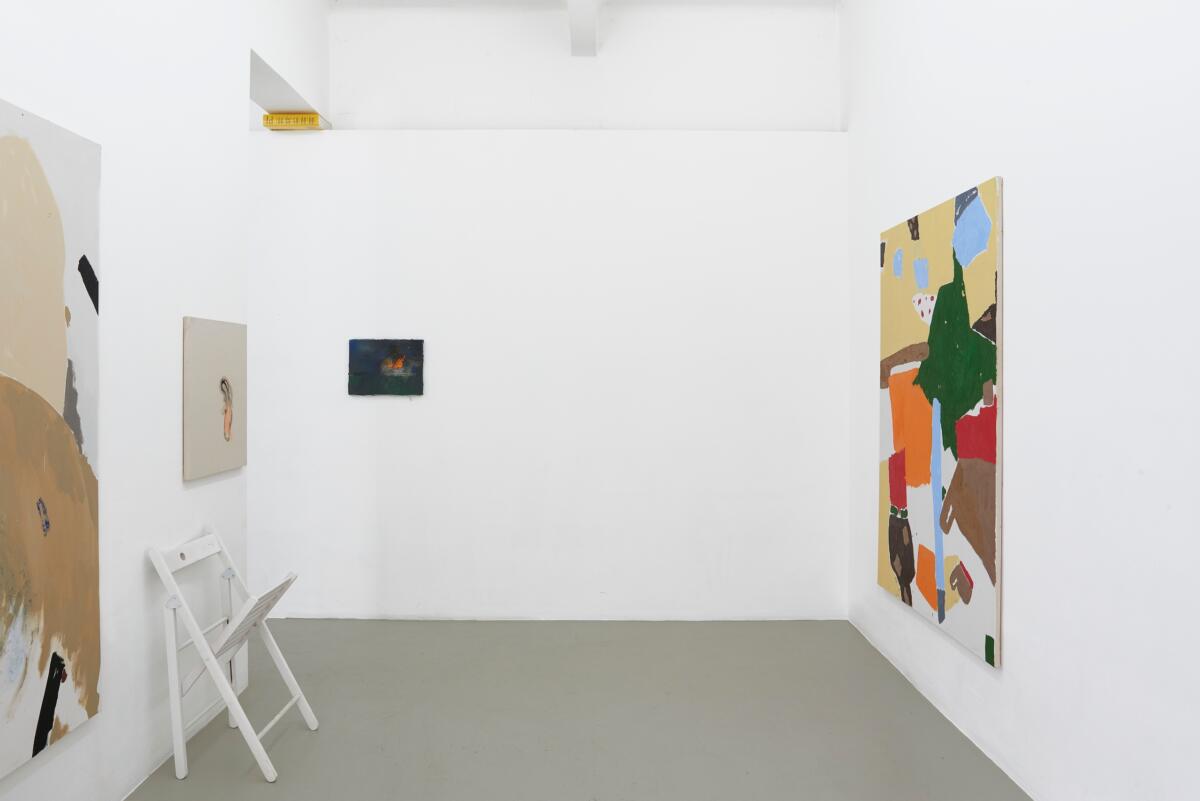
The exhibition will employ the motif of return, its factual impossibility, and nostalgia on several levels. The exhibitors work with a return to the iconoclastic foundations of modern art. They are straightforward, raw, childlike, and playful. Perhaps one could quote the question: “Is modernity our Antiquity?” by Roger M. Buergel and Ruth Noack. The history of art has reflected this return to an imaginary beginning many times. After all, Neue Wilde and the Zombie Formalists have also been returning. And after all, this operation of symbolic return is a way of continuing in the tradition of modernism and, simultaneously, separating from it. The emphasis on nostalgia is also a counter-reaction to the wild technological and communicative transformation pervading our current lives. It is a kind of non-proclamatory defiance of the surveillance of Internet networks with their trading in attention; it is a way of avoiding the temptation to relentless updating. It is a skeptical relativization of the Woke Generation’s mentoring activism and claims on the individual in the face of global existential challenges and generalizing cultural judgments.
On the one hand, the reference to the New Wave cinema is an intuitive and somewhat random choice. But at the same time, it bears its specific meaning of embracing certain practices; certain stylistic means. And of interpreting the social atmosphere when it is possible to say with a certain exaggeration that climate change is the new Cold War. Most young artists have to cope with small budgets, both for exhibitions and individual works, which forces them, if they are inventive, to seek new stylistic means, revitalize the tired aesthetics, improvise, bravely face fortuities, and appropriate exhibition conventions. The “breathless” feeling seems to be a good starting point for unexpected artistic gains. Coarse means of expression, a certain degree of clumsiness, carelessness, and emphasis on neglected or peripheral subjects are often interpreted as contempt for viewers, but in reality, they respect them.

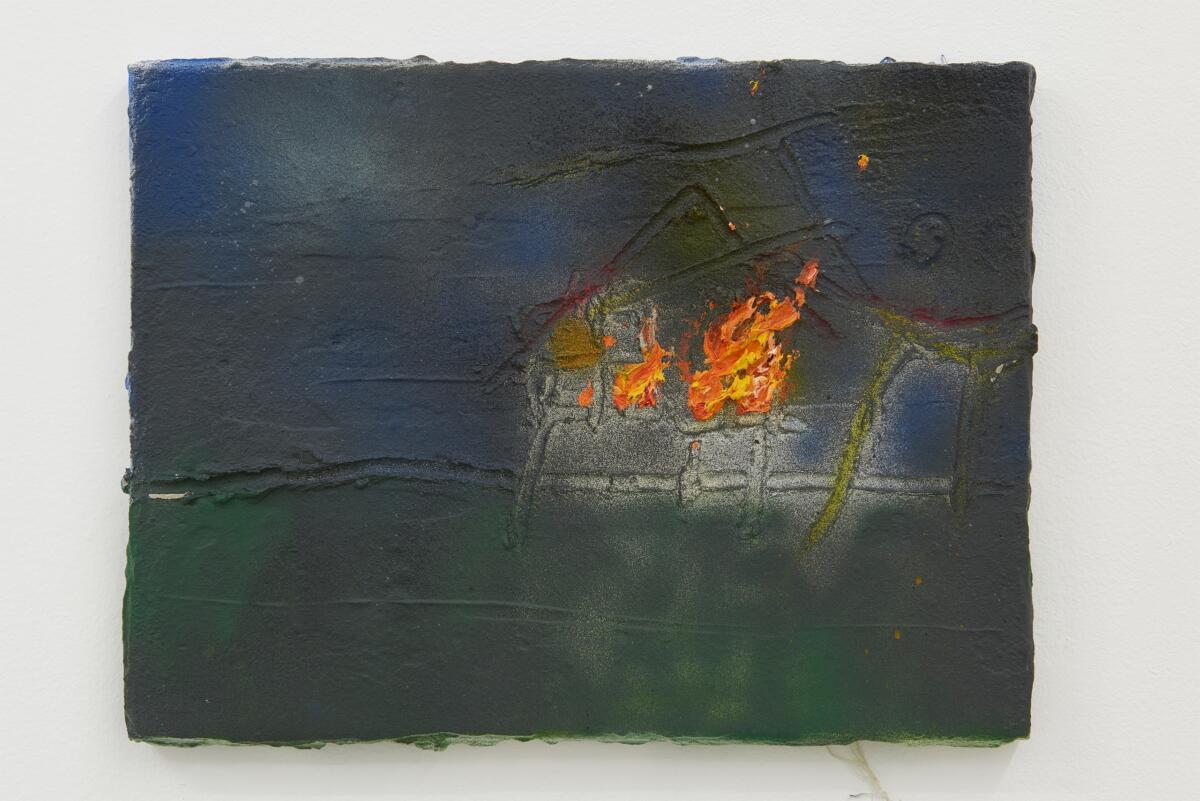
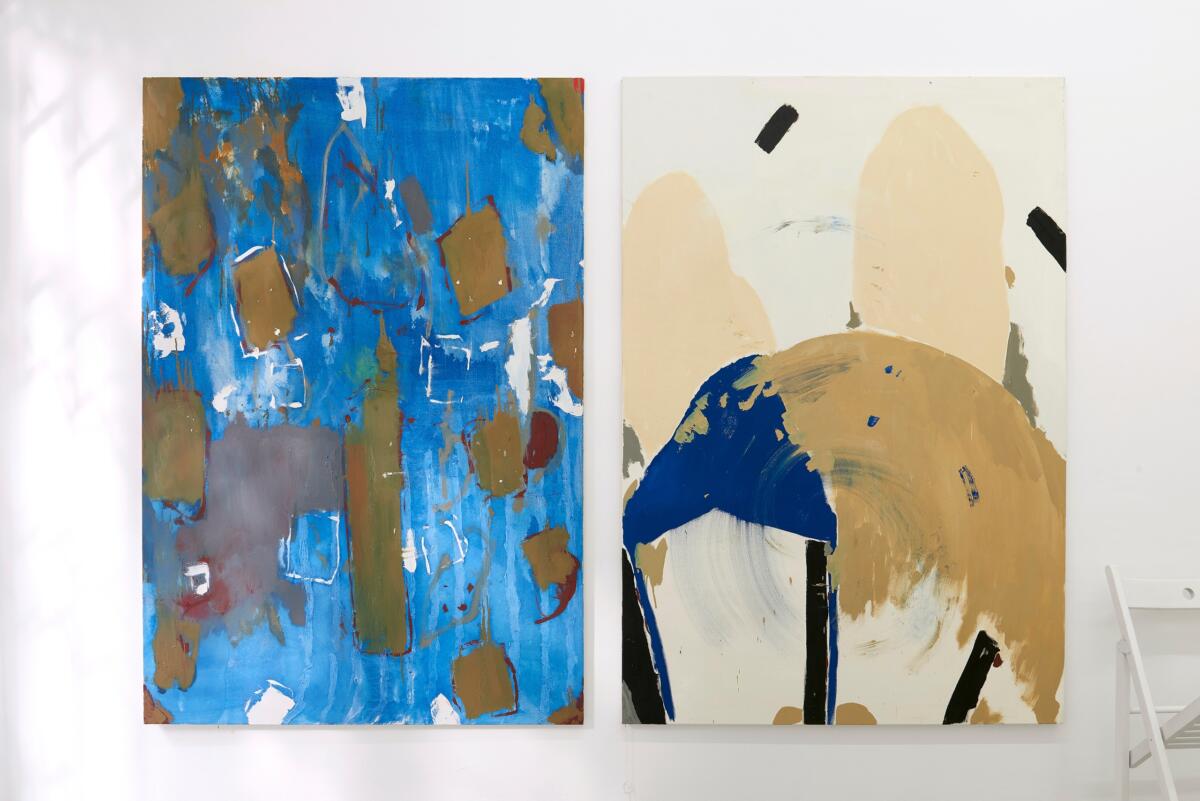
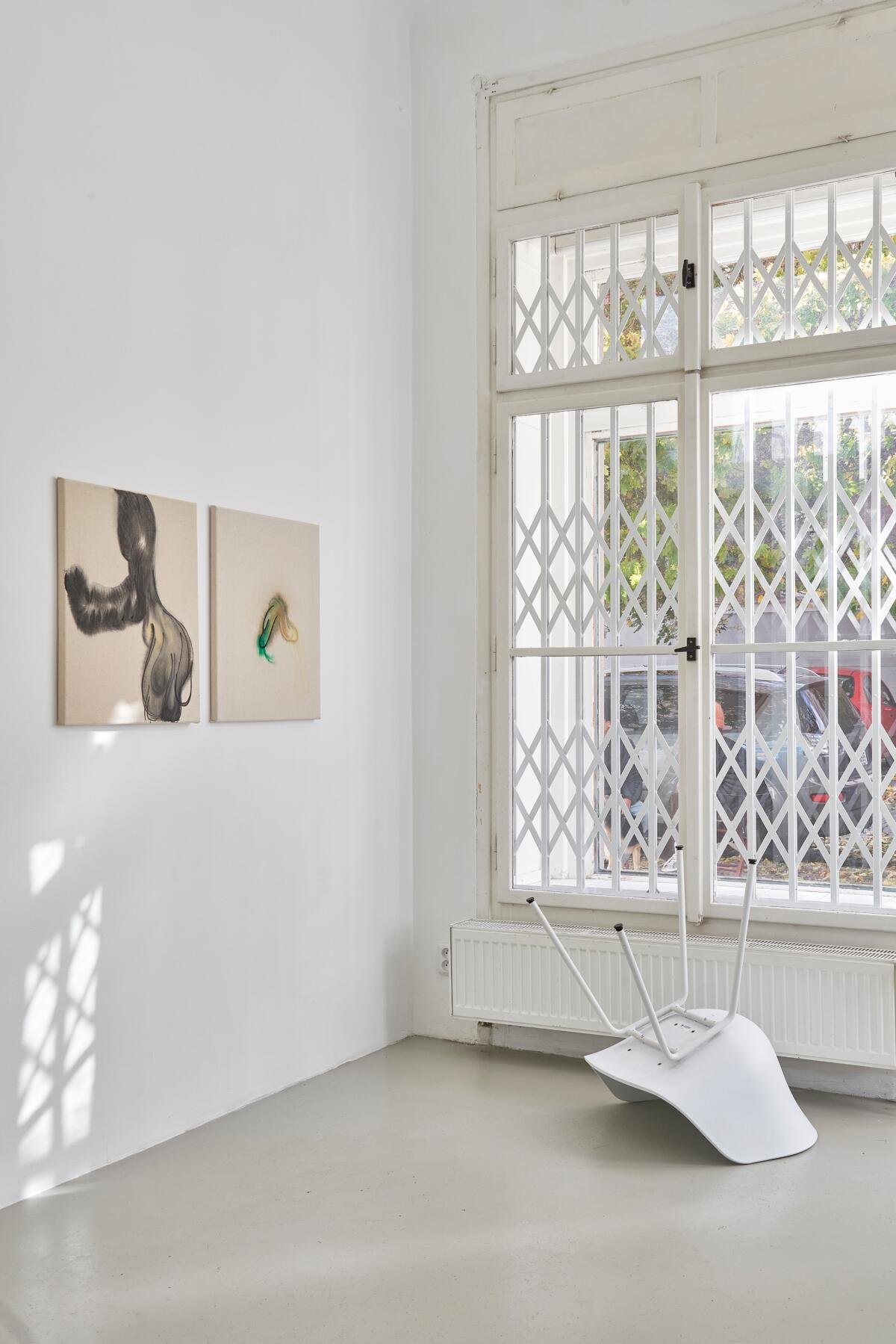
The term ‘nostalgia’ was first used by the German physician Johannes Hofer in 1688 to diagnose the ailments of Swiss mercenaries after returning from years of service abroad. By analogy, most exhibitors have encountered each other when away from home, and they have either short or long both study and work stays abroad behind, from which they return to the domestic troubles, the contradictions between the imagined and constantly failing reality of home with its sticky tendrils of memories of their own failures and moments of happiness.
The title of the exhibition is hence “Pocket Variations.” After all, we all reach into pockets ‒ mostly our own or the more daring or hardened ones into someone else’s. The shape of a pocket is felt but usually not seen. The number of objects customarily carried in pockets may be fairly well circumscribed by our experience, but what about those of the Big Others? The scent of mystery and danger wafts from the pockets of strangers. Pockets emptied and empty, pockets tailor-made. Pocket size and a space-time pocket.

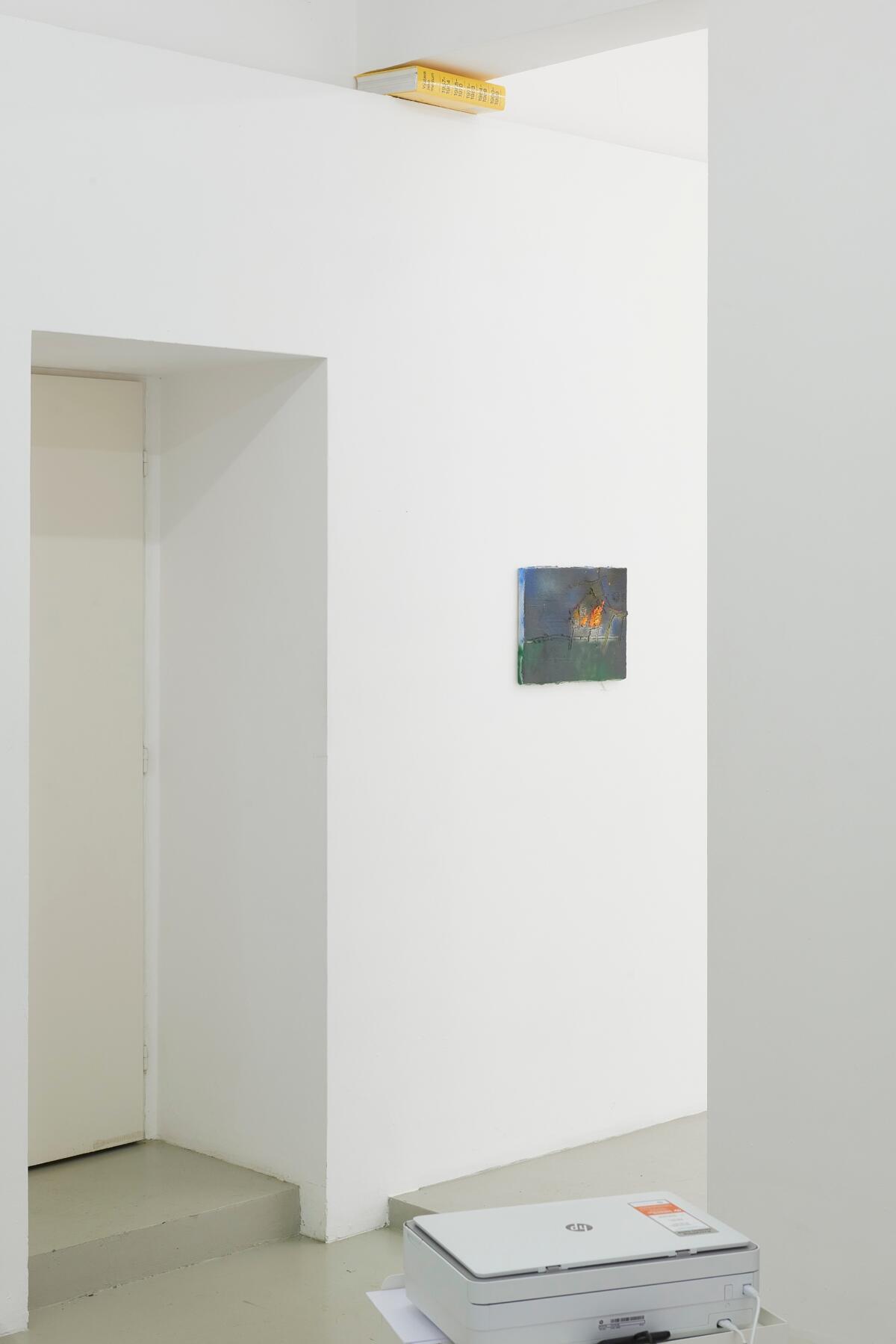
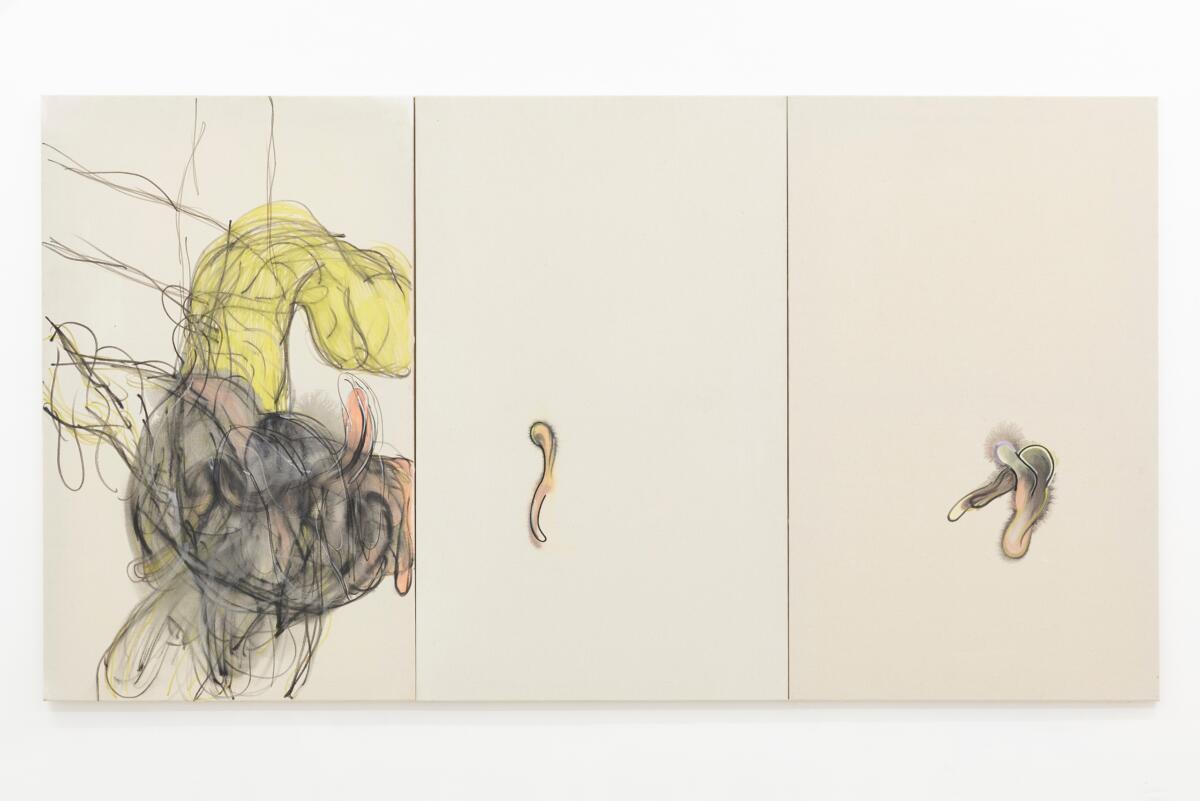

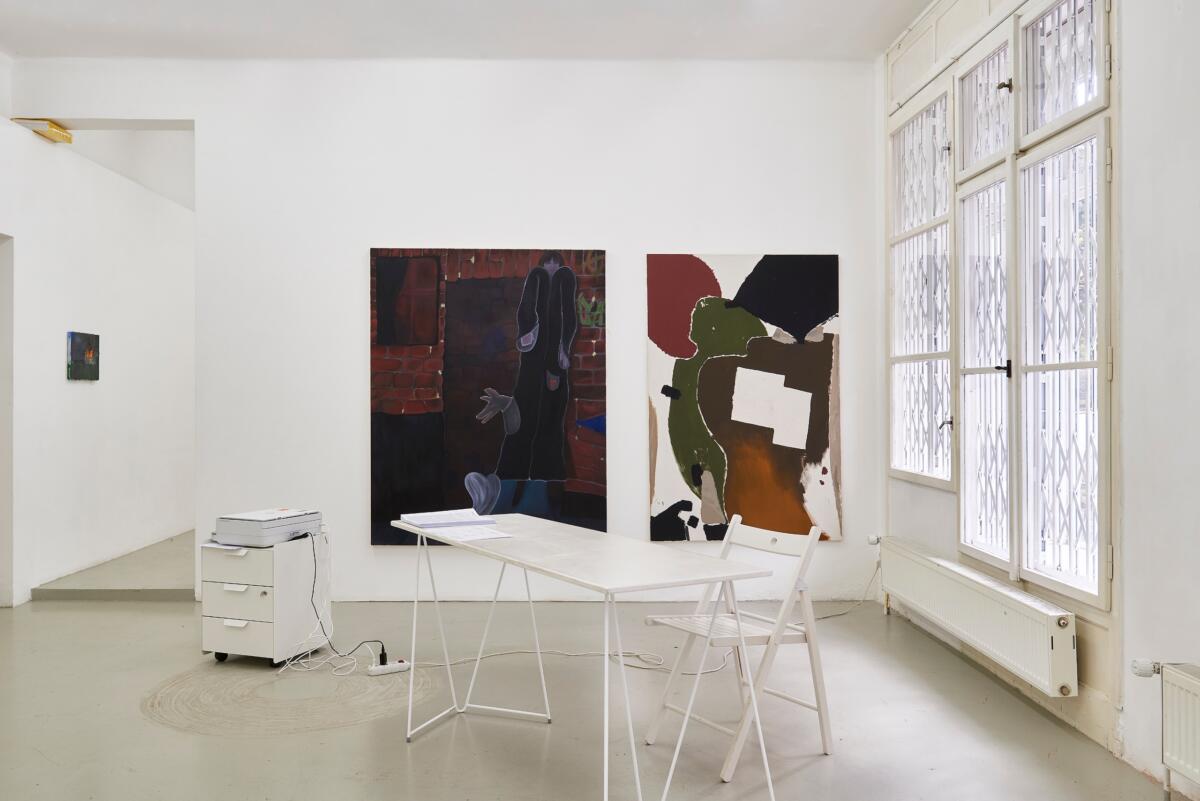

Matouš Kašpar
The crucial medium of Matouš Kašpar is painting. His expression is thoughtful, gestural, and appropriated via texts and framing. If it were not for its apolitical nature, even Bertolt Brecht would be pleased. Kašpar reflects on the relationship between the signifier and the signified. He repeatedly relates to selected motifs (Matisse’s Dance, Windows XP, doors, keys, and many other things), every time developing and discursively shifting the motif. He often tends toward diagrams, typography, or a split image. His approach oscillates between oppositions holistic/particular, digital/physical, and artificial/natural. One can view the questions these oppositions raise as a manifestation of curious enthusiasm, existential distress, and a certain solace of nostalgia for the veterans of the artist’s childhood.
Barbora Lepší
The primary media of Barbora Lepší are paintings, objects, and installations. The basis of her hitherto oeuvre is a regular drawing routine and motifs of the human body. She is interested in the details of hair and the folds and texture of the skin. Not in the sense of anatomy but of the body as a form and, simultaneously, an ‘enigma.’ Her work betrays the influence of graphic programs and their visuality, effects, layering, and framing. But the result is palpable; it has its specific structure, the composition of materials, ‘corporeality.’ The individual works, although created intuitively, are nevertheless set in relevantly chosen fields of reference (Surrealism, Kris Lemsalu, Aaron Curry, Magic Realism, Ester Krumbachová, New Wave, Eva Hesse). In addition to these references, it is also worth mentioning a formal and perhaps even content similarity to the works by Jitka and Květa Válovás. Their existentialism in Barbara’s interpretation fuses with the ‘pop’ colors of the underlayers and the flatness of the felt tips.

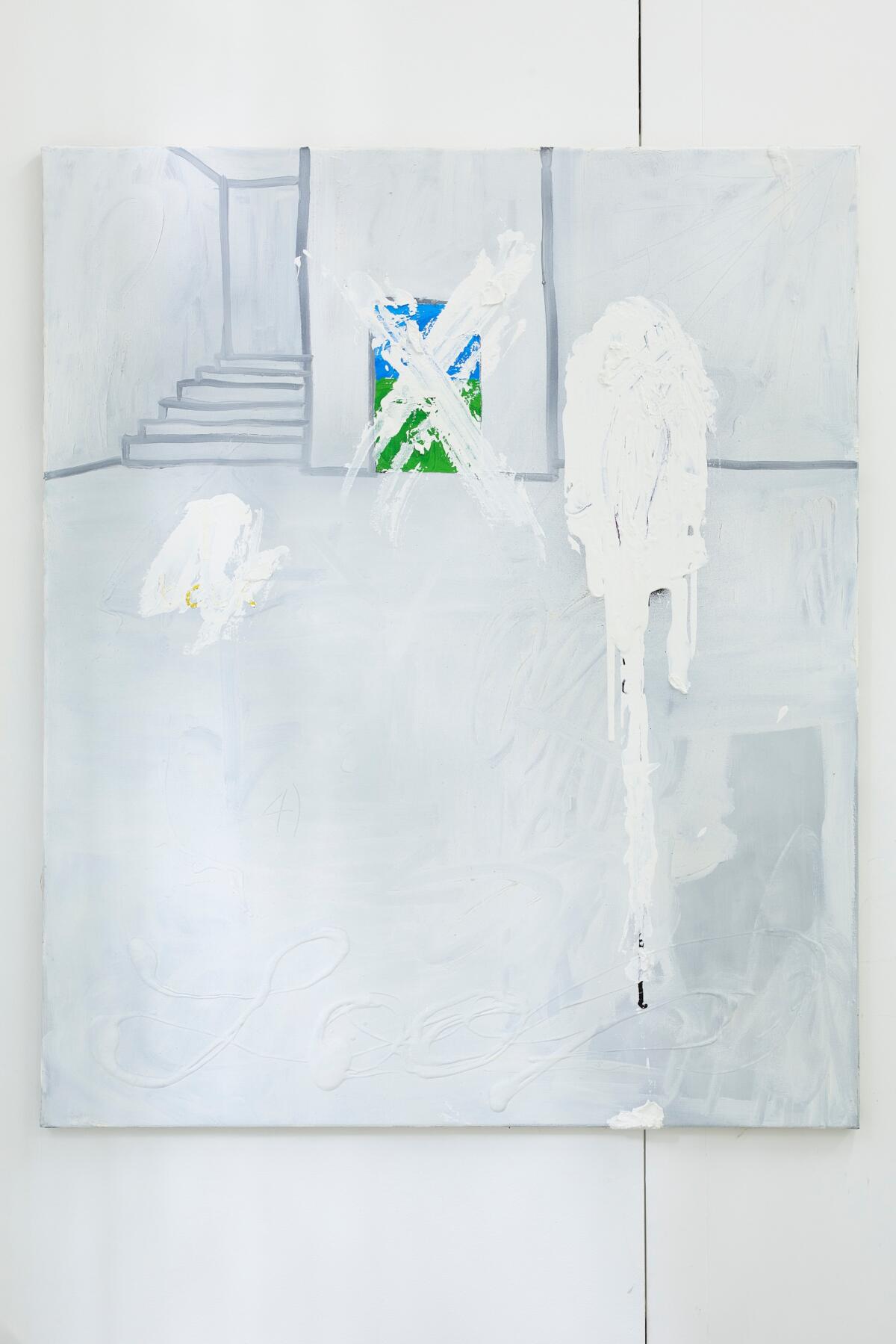
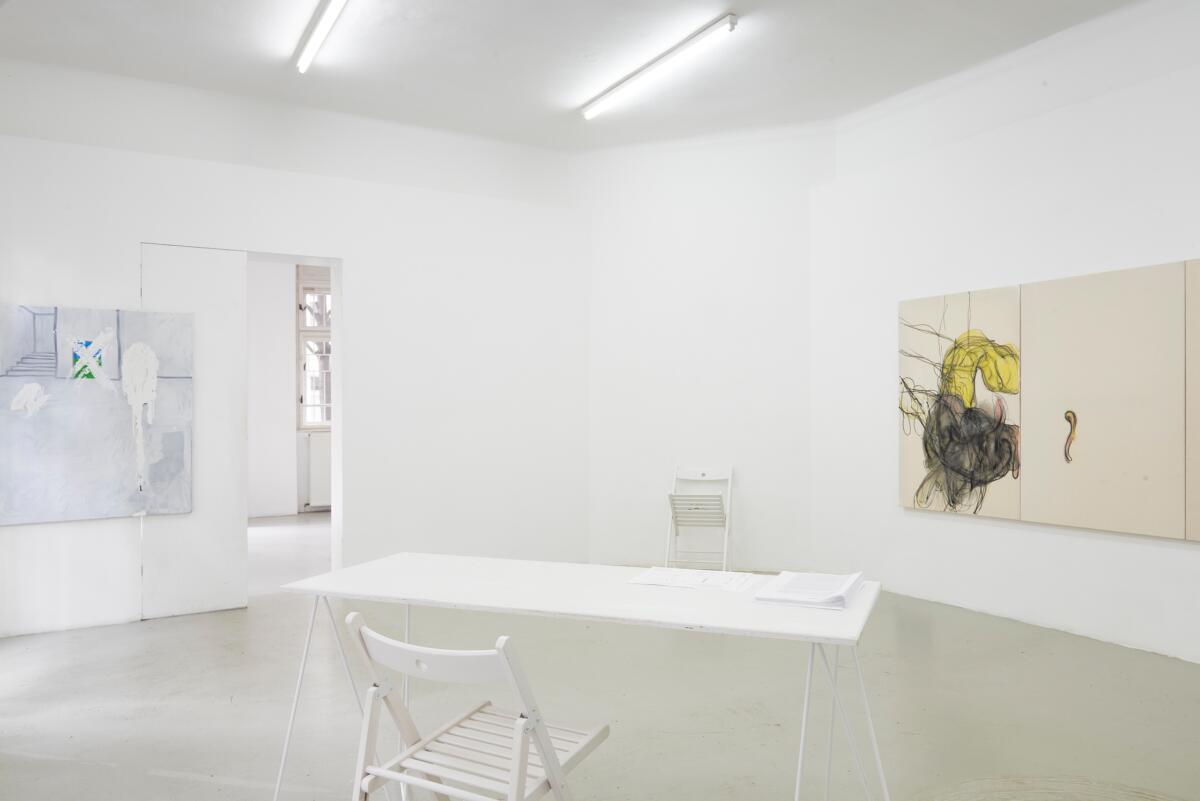

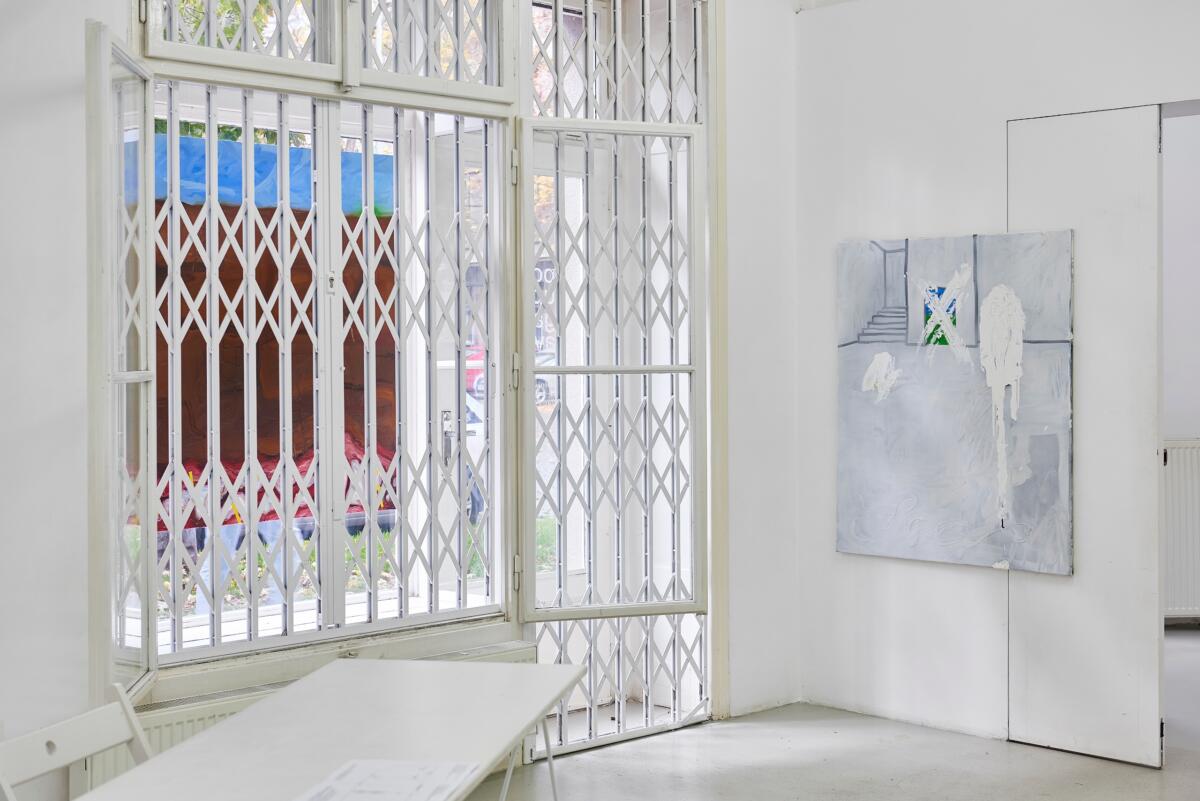
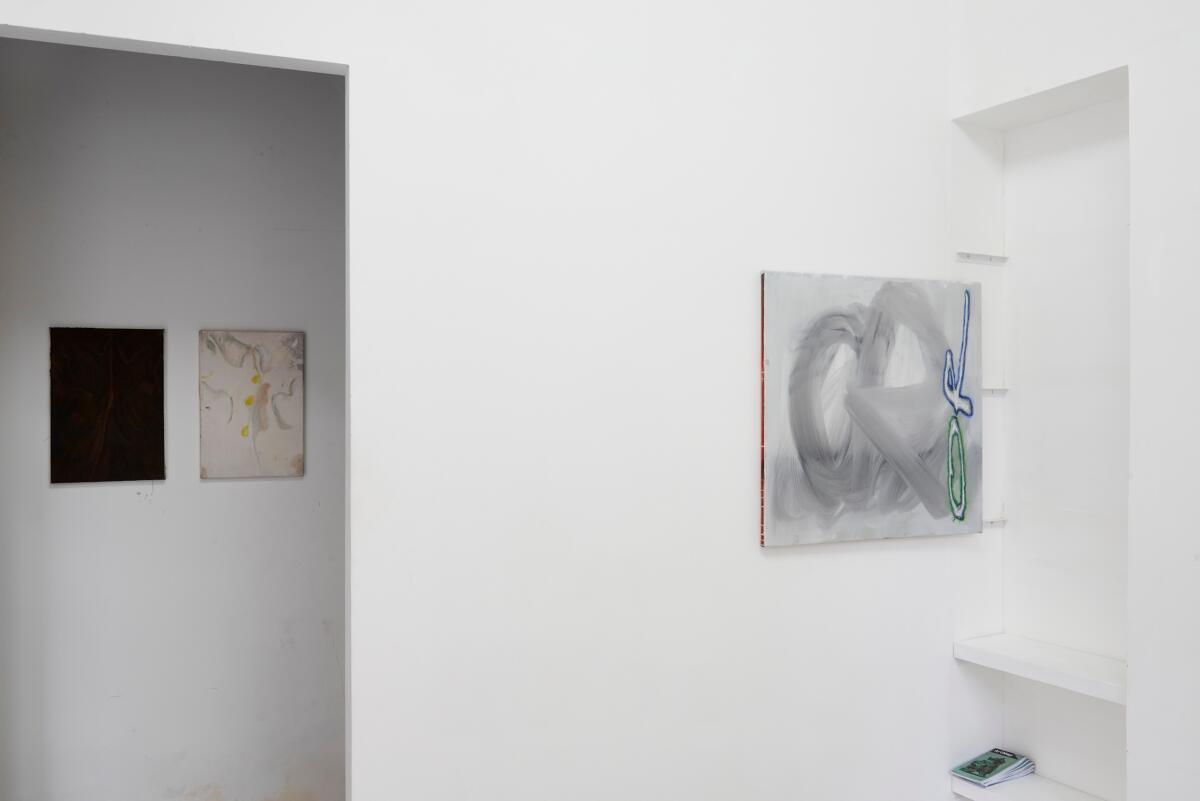
Sofie Tobiášová
Sofie Tobiášová’s primary medium is painting, with regular excursions to videos, installations, and texts. Occasionally, she presents herself under the alter ego of Demi Glace. Tobiášová is interested in the narrative, in a loose sequence of random images and situations. Subconscious motivations versus the wheel of fortune. A remix of everyday experiences. Her painting style is both stuttering and fragile. Her emotions are understandable but also hidden in the magic of symbols and painterly forms. The individual canvases originate as game boards for open discursive play with viewers. The basis of its rules is not only intellectual speculation but, much more, the pleasure of chaining associations and looking. She is the author of the book Everyone Is Calling Me Selfie, which came out in the PageFive publishing house in 2021.
Adam Vít
Adam Vít is an artist who primarily paints. He paints because he can, because people have always painted, and they keep painting despite technological progress. He is interested in situations that shape images. Despite the apparent crudity of execution and directness of approach, his works are based on detail and require subtlety and immersion from viewers. The chosen principle thus gives rise to a kind of artistic polemic, where Vít is both the protagonist and antagonist. One can relate his work, among other things, to the notion of gesture, in the sense of minimal effort and perfectly harmonious events, dry smudges, and calligraphy. It is questionable whether his paintings are symptomatic of today’s complex hyper-referential present or whether they are instead an expression of a desire to reduce complexity. Are they esthete or primitive in a good sense?
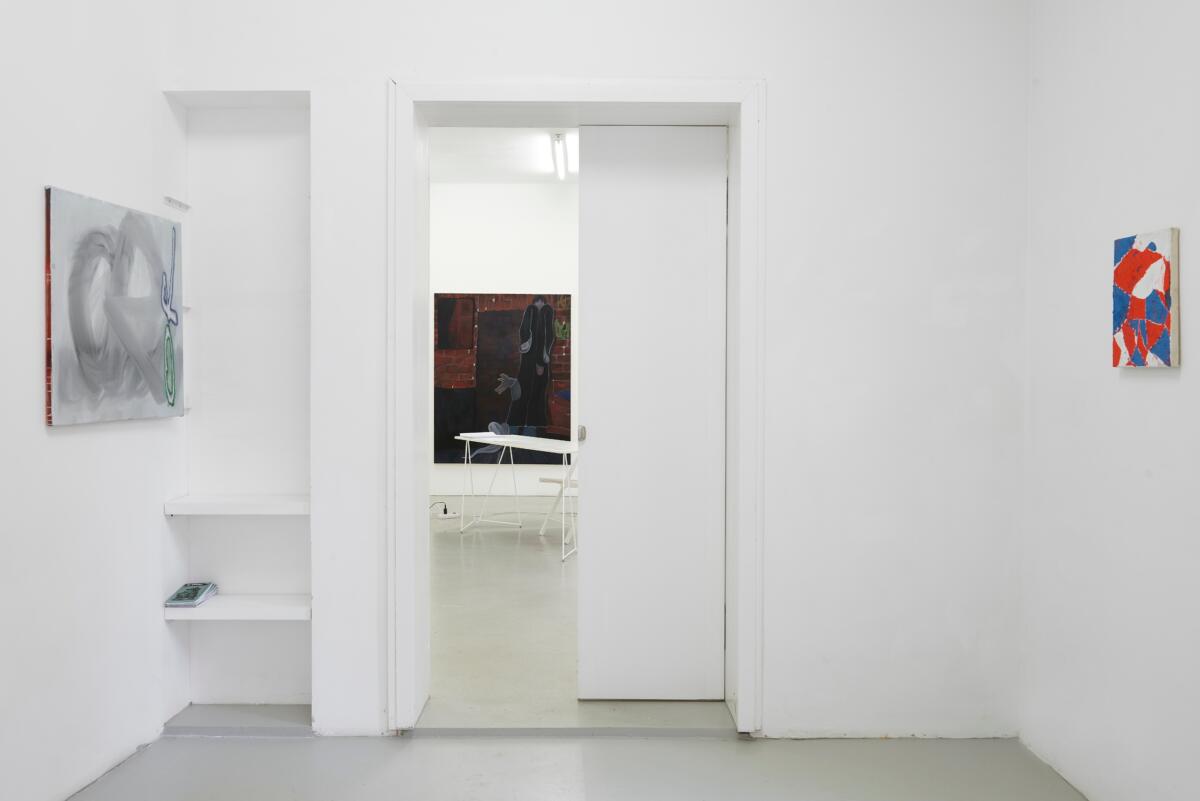
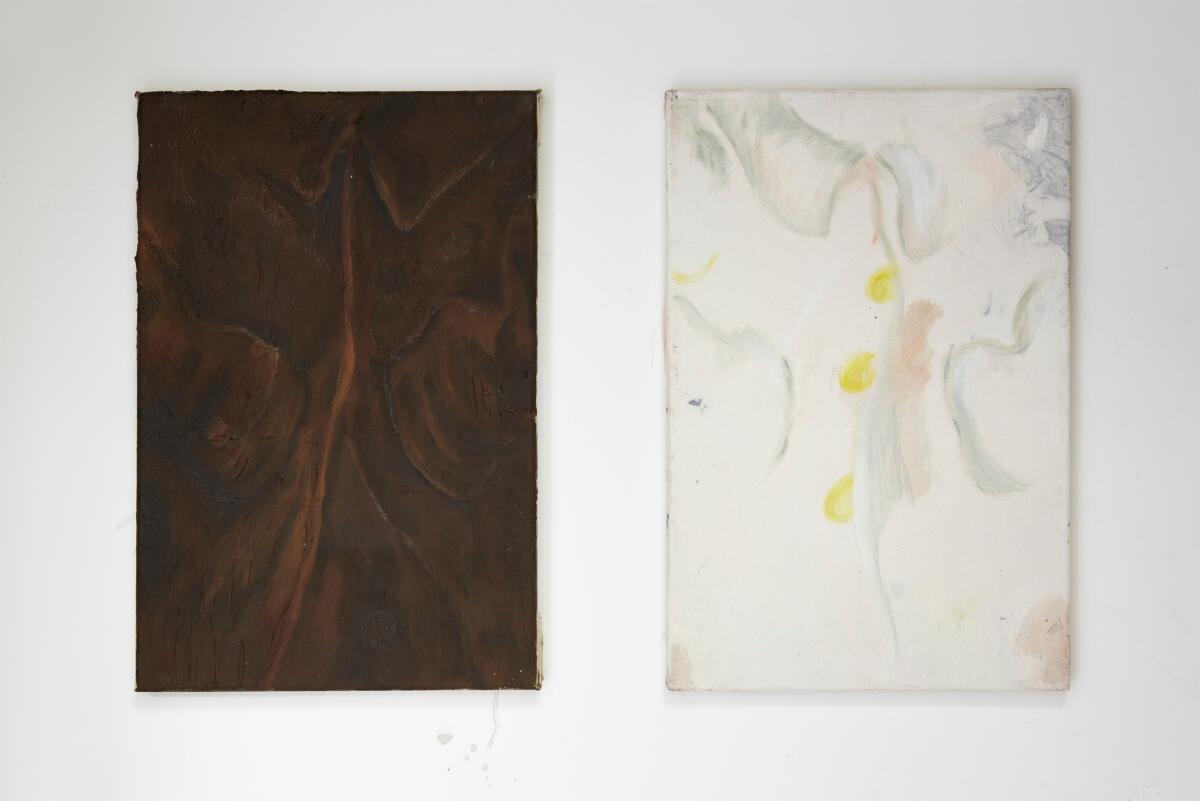
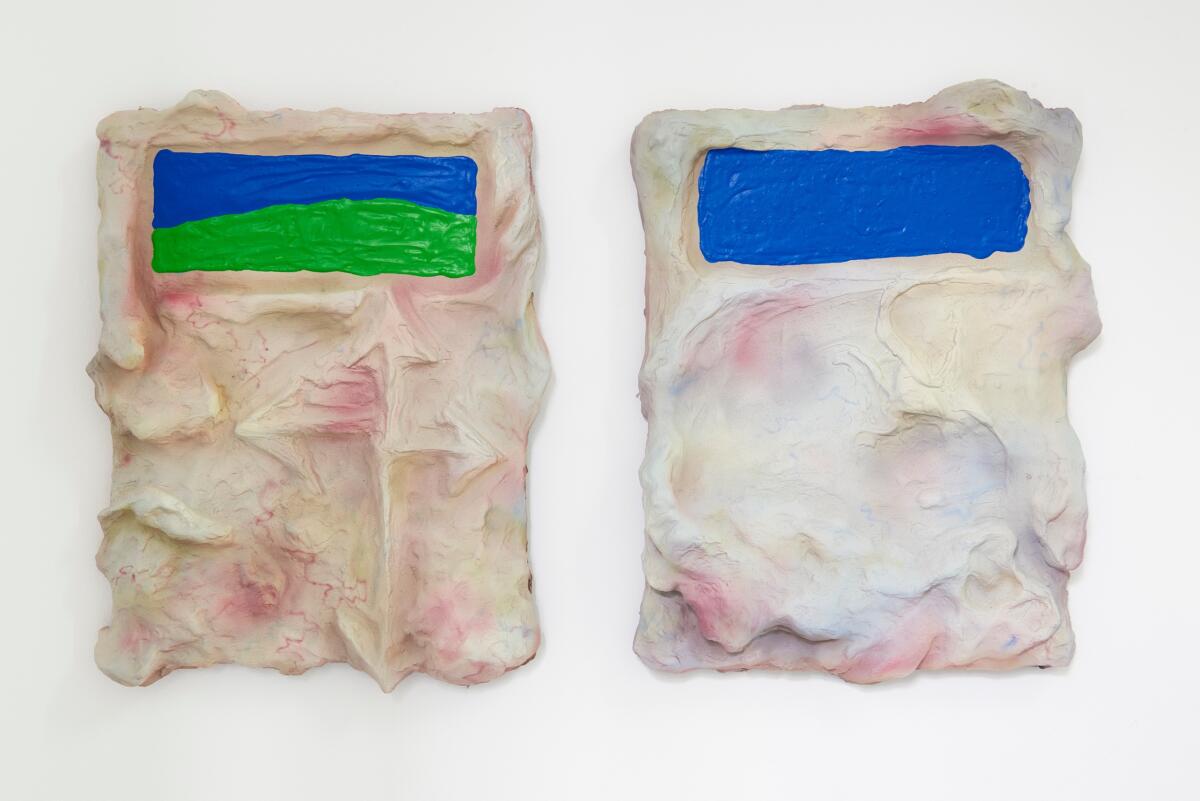
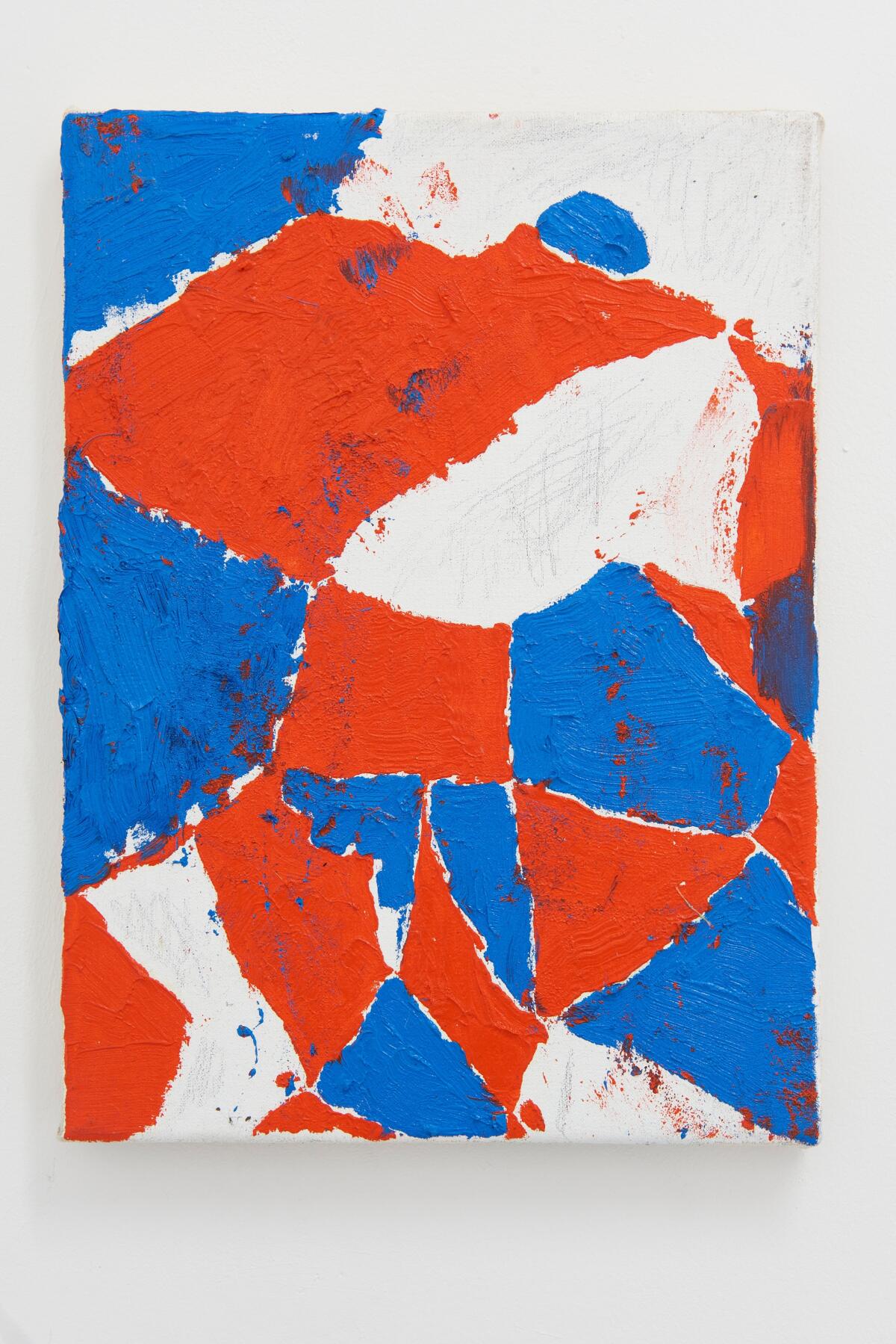
All images courtesy of the gallery and the artists. Photos: František Svatoš.
Imprint
| Exhibition | Pocket Variations |
| Place / venue | AVU POP-UP Gallery, Prague, Czechia |
| Dates | 20.10 - 10.11.2022 |
| Curated by | Marek Meduna |
| Photos | František Svatoš |
| Index | Adam Vít AVU POP-UP Gallery Barbora Lepší Czechia František Svatoš Marek Meduna Matouš Kašpar Prague Sofie Tobiášová |
